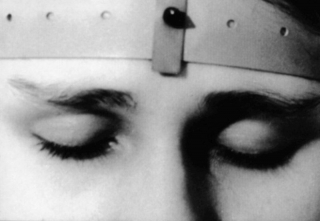Date: 17 April 2002 | Season: Infinite Projection
GUSTAV DEUTSCH: FILM IST 1-6
Wednesday 17 April 2002, at 7:30pm
London The Photographers’ Gallery
Drawing on a vast accumulation of material from archives throughout the world, Deutsch multiplies content against form to magnify the power of each image, and presents a rigorous and entertaining exposition of film’s unique qualities. The initial six sections of this tableaux film focus primarily on scientific and medical footage concerning the birth of cinema and the phenomena of sight and perception.
Gustav Deutsch, Film Ist 1-6, 1998, 60 min
Thomas Draschan, Metropolen des Leichtsinns, 2000, 12 min
The screening of Film Ist 1-6 is supported by the Austrian Cultural Forum.
PROGRAMME NOTES
GUSTAV DEUTSCH: FILM IST 1-6
Wednesday 17 April 2002, at 7:30pm
London The Photographers’ Gallery
FILM IST 1-6
Gustav Deutsch, Austria, 1998, colour, sound, 60 min
“Film Ist consists, almost exclusively, of sequences from existing scientific films. These films are about the acrobatic flights of pigeons, the intelligence testing of apes; about ‘reversed worlds’ and stereoscopic vision; hurricanes and impact waves in the air. They depict paper projectiles penetrating bubbles of air and bullets passing through ostrich eggs. They concern the dynamics of the diaphragm as one breathes, sings or makes music. They show how glass breaks, children walk and how a Mercedes Benz crashes into a stone wall in slow motion.
“As with all images which issue from the area of the natural sciences, scientific films almost always follow a special educational line – they address the viewer as a beneficiary of their discoveries and thus, in a wider sense, as a patient. They attempt to create the ideal, insightful, patient. In order to be comprehensible and convincing outside of their specialist sphere they do not present the arguments in scientific language (mathematics) but detour into the world of aesthetics. Here they encounter other conventions – visual, narrative and poetic. The collective ‘aesthetic knowledge’ stored in these conventions lends form to the scientific knowledge.
“And this a kind of ‘ideography’ is created which almost everyone has learned to read during their school days or from school television. But I think this process contributes more to cinematographic education than to the scientific. The contempt with which scientific films are received is not directed against the content, but rather against their conventional, unimaginative, ridiculous and commentary-contaminated appearance. Similarly, the fascination with some teaching films, which is certainly less common, can be attributed almost exclusively to the power of their imagination – images which one has never seen, even in the cinema.”
(Alexander Horwath, Austrian Film Archive, Vienna)
METROPOLEN DES LEICHTSINNS
Thomas Draschan, Germany, 2000, colour, sound, 12 min
Found-footage collides together to consider the lifestyle options of modern man.
Back to top
